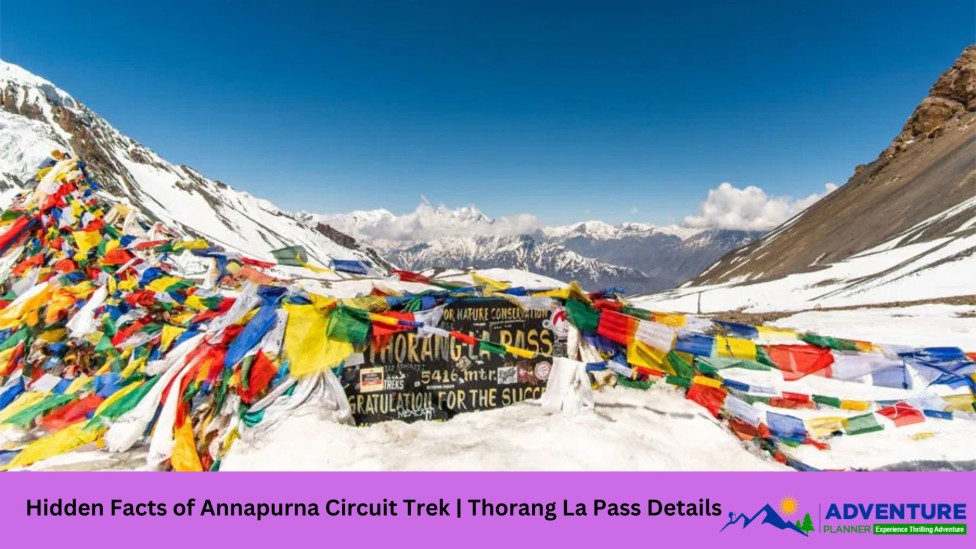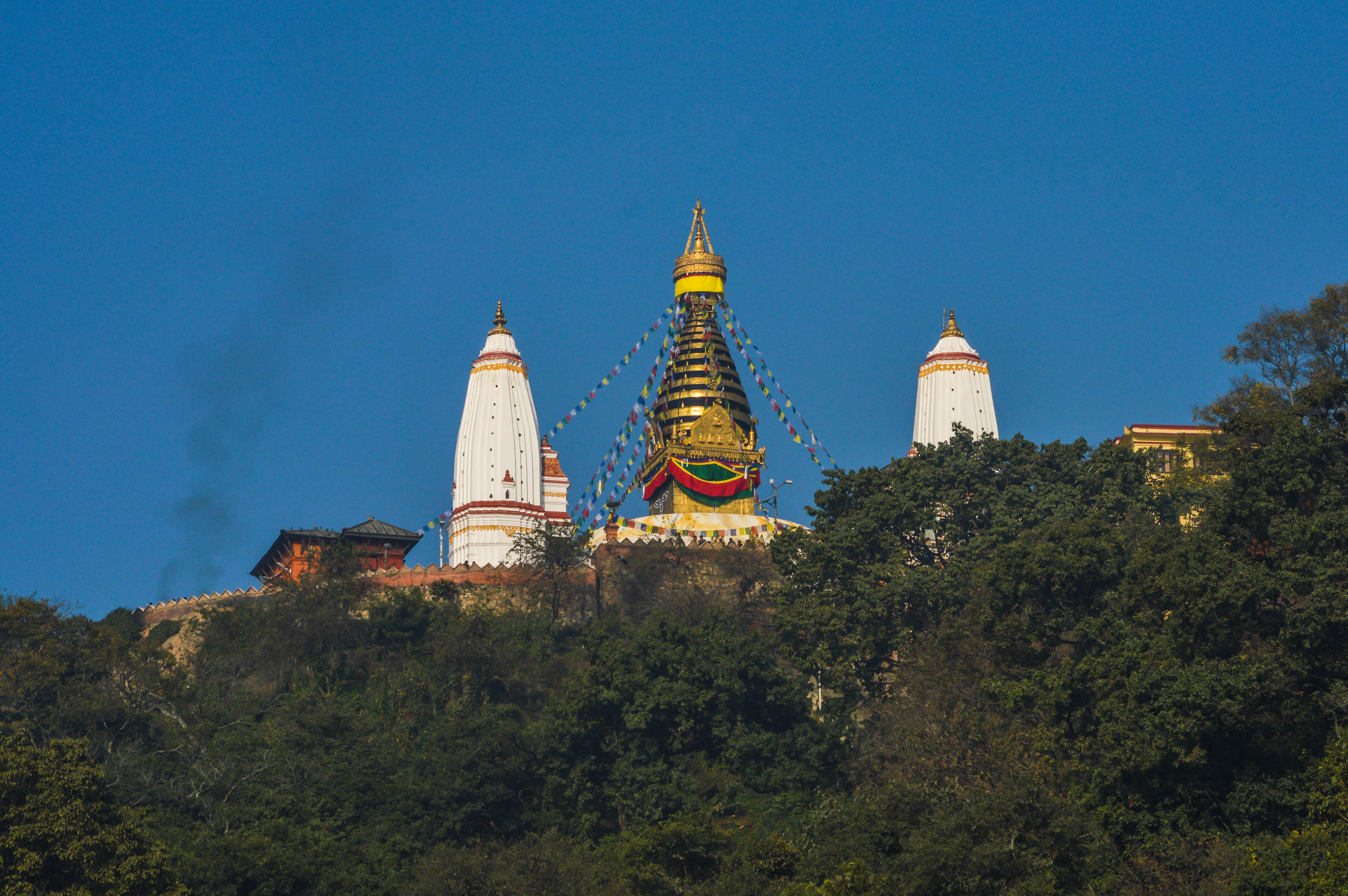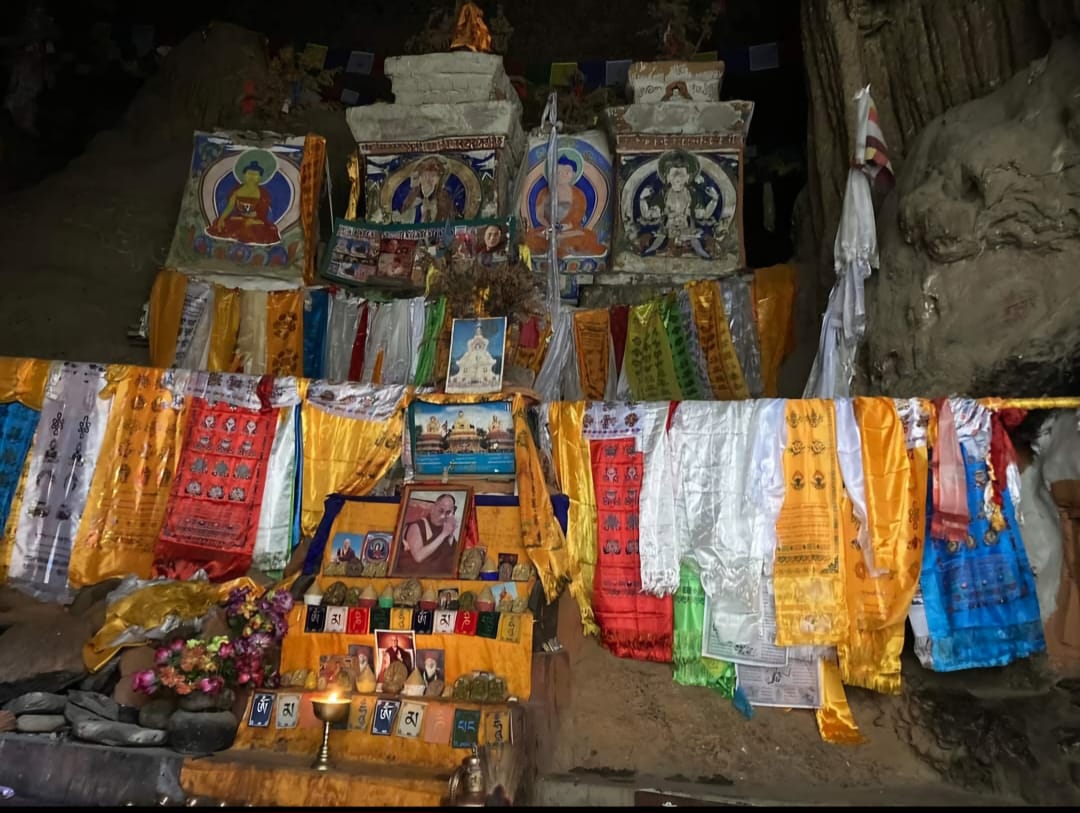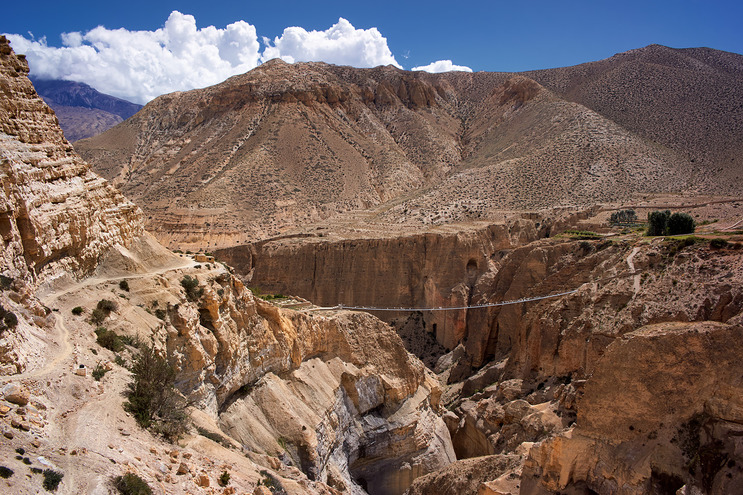The Annapurna Circuit Trek is one of the most popular and scenic trekking routes in Nepal, offering trekkers a diverse range of landscapes, cultures, and experiences. It circumnavigates the Annapurna Massif, taking trekkers through lush subtropical forests, alpine meadows, and high-altitude deserts, while providing awe-inspiring views of some of the highest peaks in the world, including Annapurna I, Dhaulagiri, Machapuchare, and Manaslu.
The Annapurna Trek, one of Nepal's most famous trekking routes, offers breathtaking views and an unforgettable experience. However, some lesser-known facts about this trek can enhance your understanding and preparation for the journey:
1. Annapurna Circuit's Historical Importance
The Annapurna Circuit was once considered the best trek in the world. While it remains stunning, it was historically more isolated and remote before roads began to be built in the region, which changed the landscape of the trek. This also increased accessibility, leading to more trekkers visiting the region.
2. Diverse Climatic Zones
The Annapurna Circuit spans a variety of climatic zones, from tropical to alpine. Trekking through the route, you transition through different vegetation zones:
- Tropical zone at the beginning with dense forests and subtropical climate.
- Temperate zones in places like Ghorepani, with rhododendron forests.
- Alpine and arctic zones at higher altitudes like Thorong La Pass (5,416 meters), where the temperature can drop drastically.
3. The Thorong La Pass
Thorong La Pass, which stands at 5,416 meters (17,769 feet), is the highest point on the Annapurna Circuit. Crossing it can be a challenge, especially in terms of altitude sickness. Acute Mountain Sickness (AMS) risk is significant due to the rapid elevation gain. Proper acclimatization and slow ascent are vital.
Thorong La is one of the most famous and challenging high-altitude passes in the world, located along the Annapurna Circuit Trek in Nepal. It is the trek's highest point, standing at a staggering altitude of 5,416 meters (17,769 feet) above sea level. Crossing this pass is often considered a highlight of the Annapurna Circuit. Here are some key details about Thorong La :
1. Location and Significance of Thorang La
- Thorong La is situated between Thorong Peak (5,430 meters) and Annapurna Massif. It connects the Manang Valley to the Mustang District, acting as a passage between the eastern and western parts of the Annapurna region.
- It holds both cultural and geographical significance. The pass is traditionally used by local people and traders, although it is now primarily known as a challenging crossing for trekkers.
2. The Challenge of Crossing Thorong La
- Altitude: The altitude of 5,416 meters makes Thorong La Pass one of the highest trekking passes in the world. This means trekkers must prepare well for the risk of altitude sickness. The drastic increase in altitude between lower regions and the pass can be difficult for trekkers who don’t acclimatize properly.
- Physical Demands: The trek to Thorong La can be very physically demanding. Most trekkers try to cross the pass in one day, which involves an early start, often leaving from Thorong Phedi or High Camp early in the morning (sometimes as early as 4 or 5 a.m.).
- Distance and Duration: The trek from Thorong Phedi to Thorong La typically takes around 4-5 hours, depending on the pace and weather conditions. The entire Annapurna Circuit often takes around 12-14 days, but this section stands out due to its extreme conditions and challenging nature.
3. Acclimatization is Key
- Altitude Sickness Risk: Crossing Thorong La without proper acclimatization can be dangerous. Trekkers are advised to allow ample time for acclimatization in places like Manang, which lies at an altitude of 3,500 meters. This helps prevent Acute Mountain Sickness (AMS), which can occur if the body does not adjust well to the high altitude.
- To help with acclimatization, it is recommended to follow a climb high, sleep low strategy and take breaks for proper rest.
4. Weather Conditions
- The weather at Thorong La can be unpredictable, and conditions can change rapidly, especially at higher altitudes. The temperature can drop drastically, and there may be snow or strong winds. Trekking during the winter months (December to February) can make crossing even more difficult due to the snow and colder temperatures.
- The best seasons to attempt crossing Thorong La are pre-monsoon (March to May) and post-monsoon (September to November). During these times, the weather is clearer, and the chances of snowfall or rain are minimal.
5. Difficulty of the Thorang La Pass
- The ascent to Thorong La Pass is steep and challenging. The path is rocky, and the air thins significantly as you climb. Some trekkers may struggle with fatigue, dizziness, or breathlessness.
- The descent after crossing the pass can also be difficult on the knees due to the steepness. It is advisable to proceed cautiously and at a slow pace to avoid injuries.
6. Stunning Views from Thorang La
- 360-Degree Views: From the top of Thorong La, trekkers are rewarded with panoramic views of the surrounding mountains, including Annapurna, Dhaulagiri, Machapuchare, and many other peaks.
- The surrounding landscape is dramatic and rugged, with expansive vistas of the high Himalayas stretching into the distance.
7. Facilities Around Thorong La
- While the area around Thorong La Pass is remote, there are teahouses at Thorong Phedi and High Camp, which offer accommodation and meals for trekkers.
- The teahouses provide the essentials for trekkers, such as food, drinks, and sometimes oxygen to help with altitude adjustment. However, the facilities can be basic, especially at higher elevations.
- Some trekkers also decide to stay at Thorong High Camp, located at 4,850 meters, the night before crossing the pass to give themselves a head start for the difficult day ahead.
8. Safety Tips for Crossing Thorong La
- Start Early: Most trekkers leave early in the morning (between 4:00 and 6:00 a.m.) to avoid afternoon weather changes and ensure enough daylight for the descent.
- Proper Gear: Due to the altitude and cold temperatures, it is essential to have appropriate clothing, including layers, a warm jacket, gloves, and a hat. A headlamp is useful for early morning starts.
- Hydration and Nutrition: Stay hydrated and eat high-energy foods to maintain strength and avoid altitude sickness.
- Trekking Guide and Porter: Hiring a guide and/or porter is highly recommended for crossing Thorong La. They are experienced and can help you deal with the physical and logistical challenges.
9. Alternative Routes and Side Treks
- Some trekkers also opt for side treks like the Tilicho Lake trek, which is situated higher in the region and offers a spectacular experience with unique views. The Tilicho Lake trek connects with the Annapurna Circuit but can be more challenging due to its high-altitude nature.
10. Religious and Cultural Significance of Thorang La
- For the local people, Thorong La Pass has spiritual significance. It is believed that the pass is a route for pilgrims who make their way between the regions of Mustang and Manang. The Annapurna Conservation Area is also sacred to many in the area, especially the Gurung and Tibetan communities.
11. Safety Considerations
- Due to the high altitude and potential for altitude sickness, trekkers are advised to know the symptoms of AMS and take preventive measures, such as gradual ascent, hydration, and proper acclimatization.
- The pass is not a place to take lightly, and it’s important to turn back if you feel unwell, rather than risk serious health issues.
12. Descend to Muktinath ( Religious Hindu's Pilgrimage Site)
- After crossing Thorong La, trekkers typically descend into the Mustang District, arriving at Muktinath, a sacred Hindu and Buddhist site. Muktinath is famous for its religious temples and hot springs, making it a place of both spiritual and physical rejuvenation after the difficult pass crossing.
Conclusion: Thorang La Pass
Thorong La Pass is a must-do for experienced trekkers on the Annapurna Circuit. It offers a tough yet rewarding challenge, with a rich cultural experience and views that are second to none. However, due to its altitude, difficult terrain, and the potential for severe weather, careful planning, acclimatization, and physical readiness are essential for safely crossing the pass.
4. The Importance of the Himalayas for Weather
The Annapurna region lies in the rain shadow of the Himalayas. This means that while the southern parts of Nepal are monsoon-affected (June to September), the Annapurna region is much drier and can be trekked year-round. However, in winter, some areas like Thorong La can be covered with snow, making travel difficult.
5. Sacred and Cultural Significance
The Annapurna Massif is considered sacred by the local people, particularly the Gurung and Thakali communities. Annapurna itself is revered as a goddess, and there are numerous temples and shrines along the trek dedicated to her, such as the temple at the base of the Annapurna Sanctuary.
6. Rich Biodiversity
The Annapurna region is part of the Annapurna Conservation Area (ACA), which is Nepal's largest protected area. It is home to diverse wildlife, including the elusive snow leopard, Himalayan tahr, and a variety of bird species like the Himalayan griffon vulture. The flora is just as diverse, with rhododendrons, pine trees, and medicinal herbs scattered throughout the trek.
7. Cultural Diversity
The trek passes through various villages, each with its unique culture and language. You'll encounter different ethnic groups such as the Gurungs, Magars, Tamang, and Thakalis. Each group has its own customs, traditions, and food, which provides trekkers with a chance to experience a variety of Nepali cultures.
8. High-Altitude Hot Springs
There are natural hot springs along the trek, like the one at Tatopani (meaning "hot water"), where trekkers can relax after days of hiking. The spring is known for its healing properties, especially for sore muscles.
9. Unique Waterfalls and River Crossings
Along the trail, you’ll come across impressive waterfalls, notably Deurali waterfall near Ghorepani, which is quite a sight to behold. The Marsyangdi River also runs alongside parts of the trek, offering stunning views of deep valleys and rushing water.
10. Teahouses and Local Cuisine
The Annapurna Circuit is well-equipped with teahouses where trekkers can stop for rest and meals. These teahouses serve authentic Nepali food like dal bhat (lentils with rice), momo (dumplings), and thukpa (noodle soup), all of which help restore energy for the journey. The meals are simple but filling, and the locals are welcoming.
11. Boudhanath Stupa's Influence
Many trekkers start their journey to the Annapurna Circuit from Kathmandu, a city that has a rich history. The Boudhanath Stupa in Kathmandu is one of the largest Buddhist stupas in the world and a UNESCO World Heritage Site. This sacred site has cultural ties to the Tibetan Buddhist community and sets a spiritual tone for the start of the trek.
12. Annapurna Sanctuary Trek : A Hidden Gem
While the Annapurna Circuit is more well-known, the Annapurna Sanctuary Trek is a hidden gem, offering a more secluded experience. The Sanctuary is a bowl-shaped amphitheater surrounded by towering peaks, providing trekkers with stunning views of Annapurna South, Machapuchare, and Hiunchuli. The region is often less crowded compared to the Circuit.
13. Risk of Earthquakes
The Annapurna region is located in a seismically active zone, so there's always a risk of earthquakes. The 2015 earthquake in Nepal caused substantial damage in parts of the region, but the trek's infrastructure has largely been rebuilt. While trekking, it is wise to stay informed about safety precautions.
14. Environmental Impact
With the increasing number of trekkers every year, the environmental impact on the Annapurna region is a growing concern. Measures are in place, such as the Annapurna Conservation Area Project (ACAP), to reduce waste, promote eco-friendly practices, and educate trekkers about responsible tourism.
15. The Hidden Lake: Tilicho Lake
One of the more off-the-beaten-path destinations in the Annapurna region is Tilicho Lake, which lies at an altitude of 4,919 meters (16,138 feet) and is considered the highest lake in the world. It is a sacred site for local Hindus and offers an incredible view of the surrounding peaks.
16. Best Time for Trekking in Annapurna Region
The best time to trek the Annapurna region is during the pre-monsoon (March to May) and post-monsoon (September to November) seasons, when the weather is clear and the views are magnificent. However, winter (December to February) can offer solitude with fewer trekkers and snow-covered landscapes.
Conclusion : Hidden Facts of Annapurna Circuit Trek
Trekking in Annapurna offers not only a physical challenge but also a deep connection with nature, spirituality, and local culture. Understanding these hidden aspects of the region can enhance your overall trekking experience. In conclusion, the Annapurna Circuit Trek is an unforgettable experience, offering a mix of adventure, natural beauty, cultural richness, and personal growth. It continues to attract trekkers from around the world, seeking both a challenging outdoor experience and an opportunity to immerse themselves in the culture and spirituality of the Himalayas.




